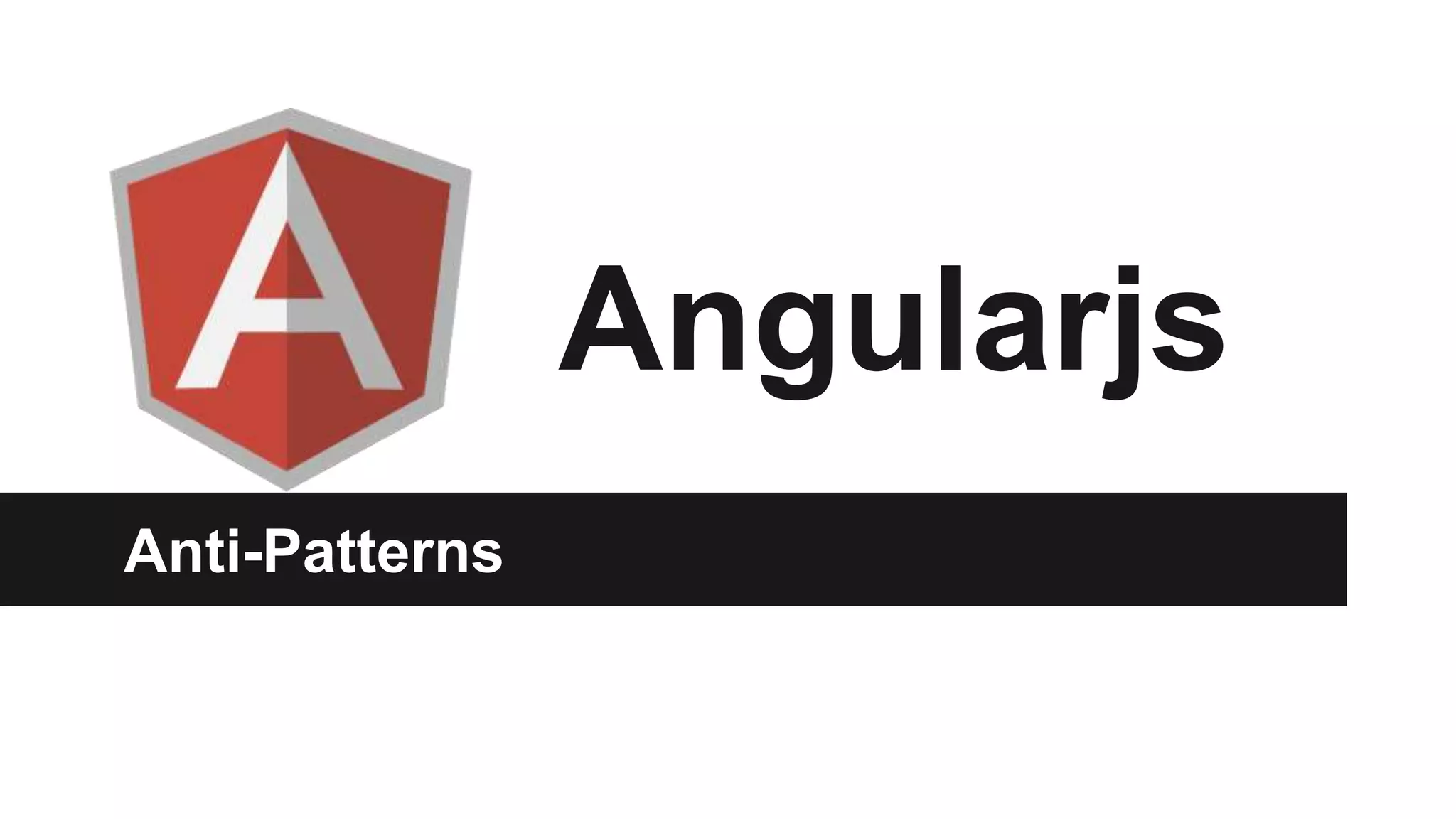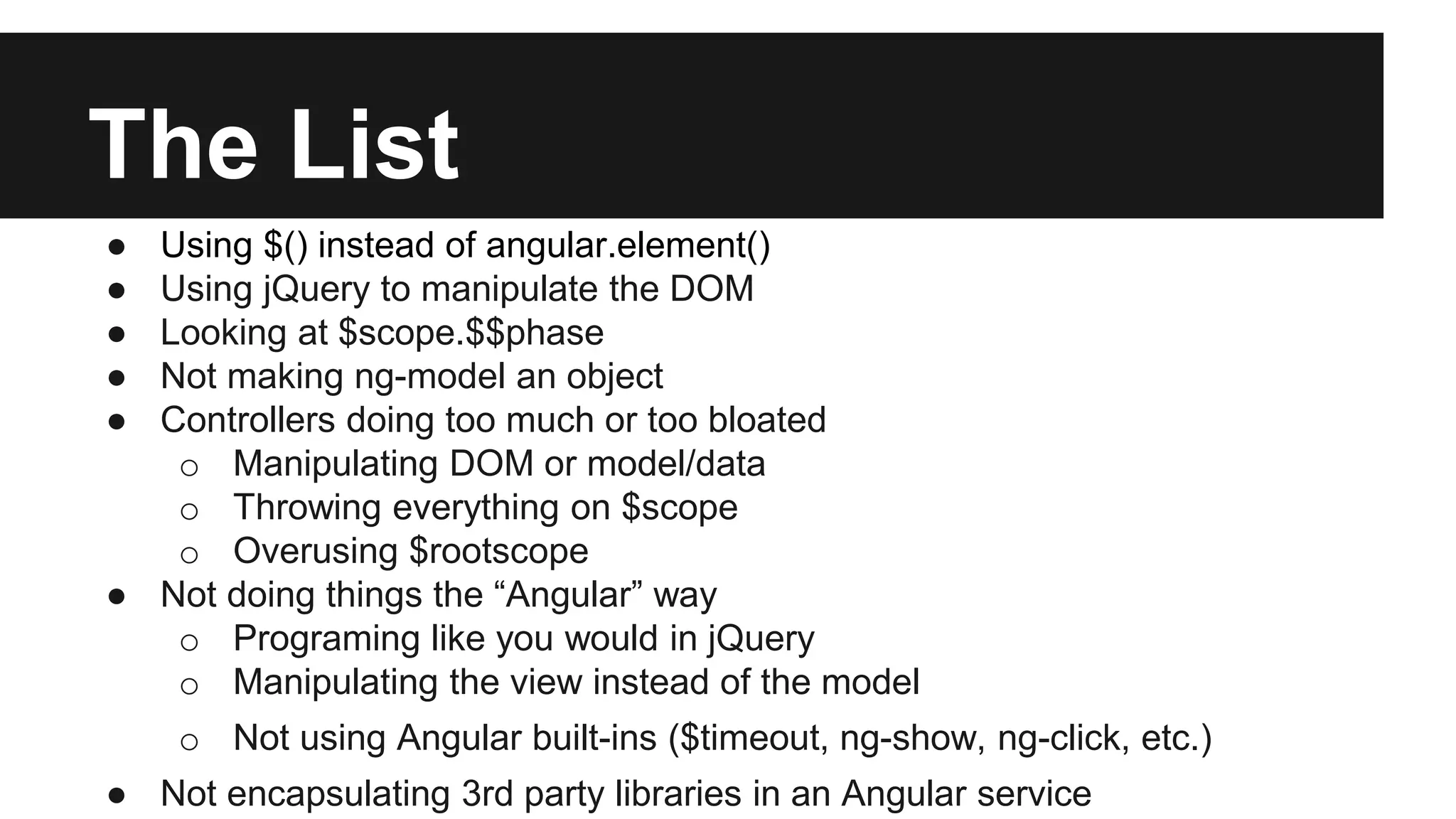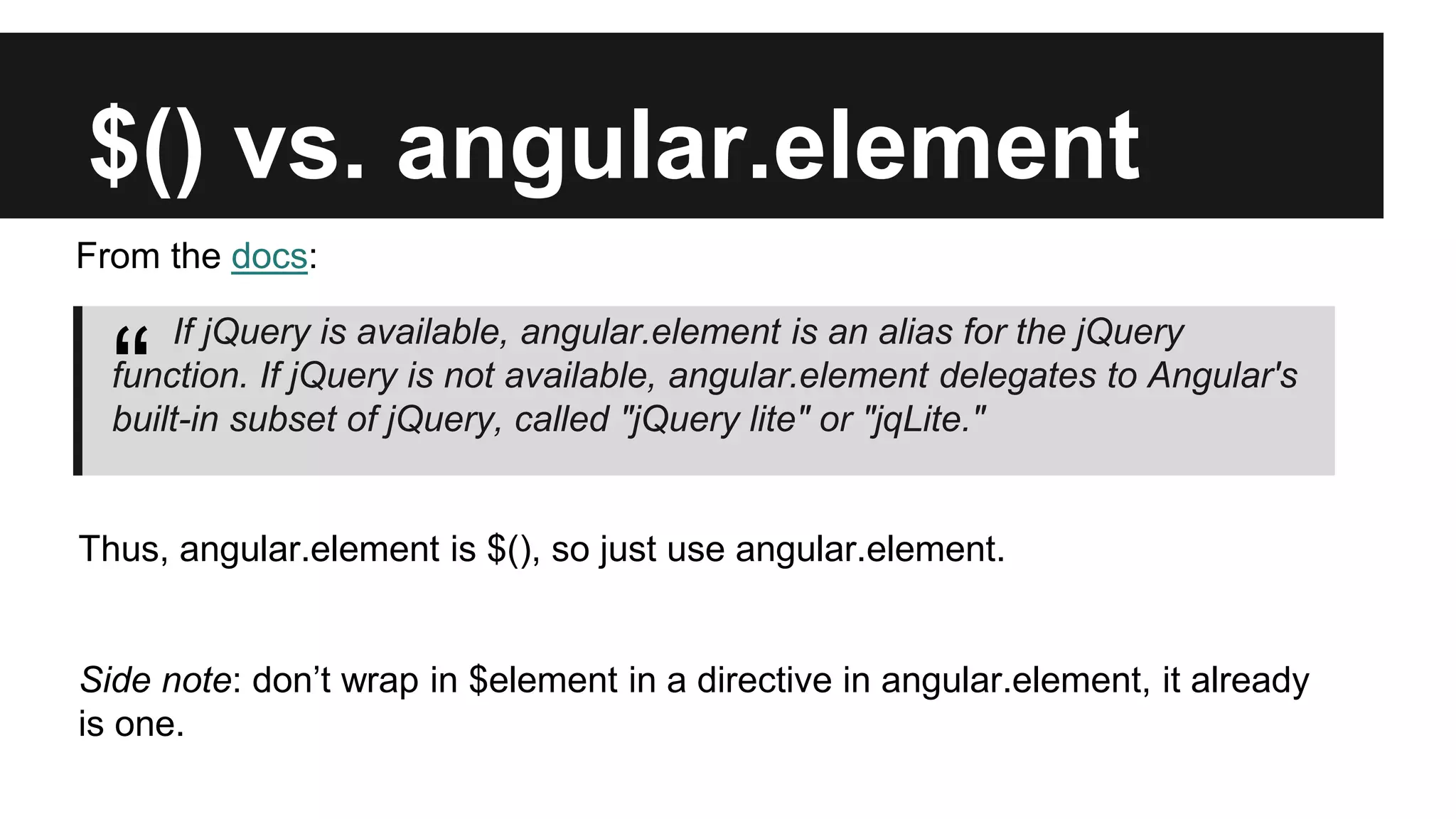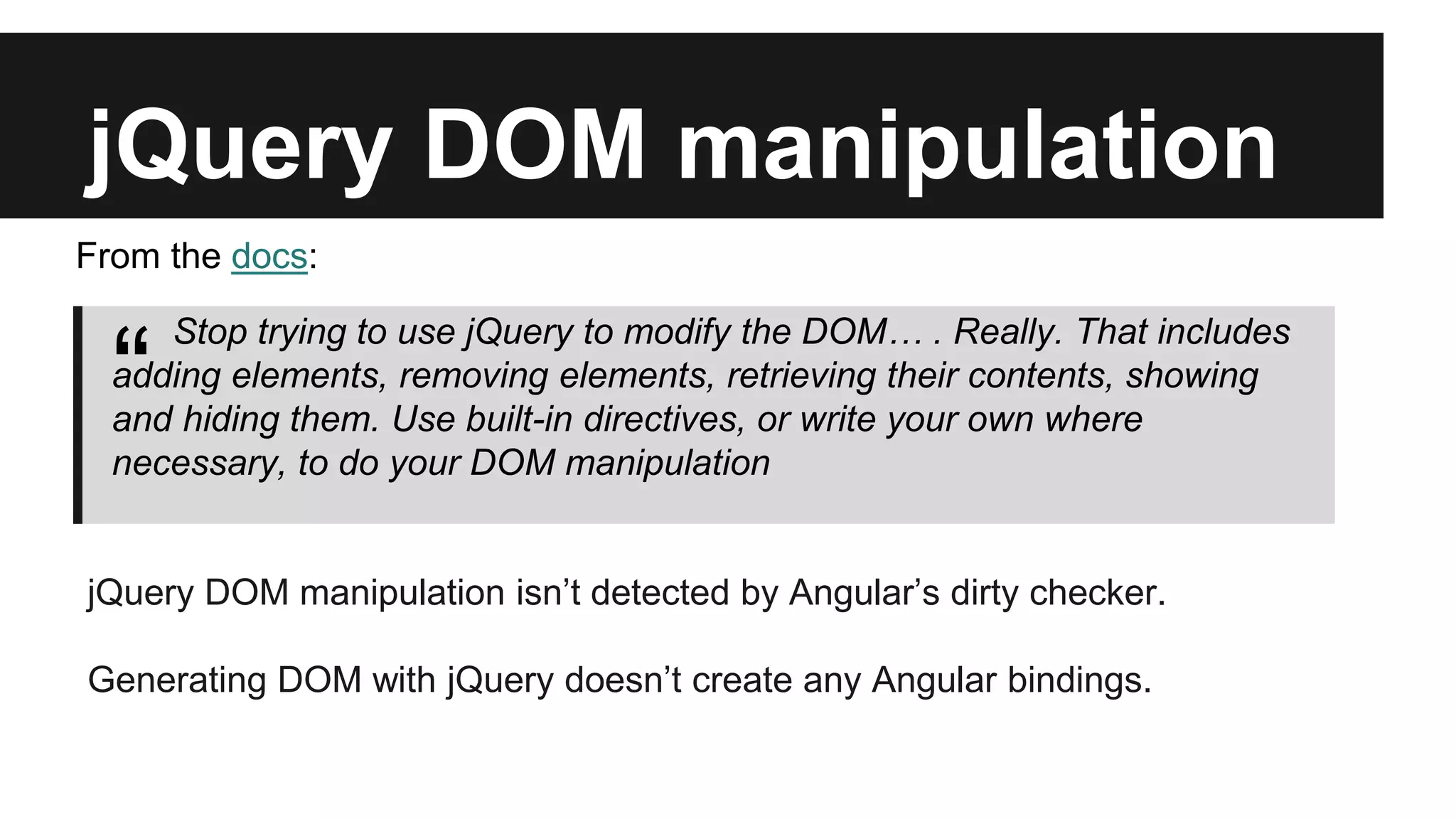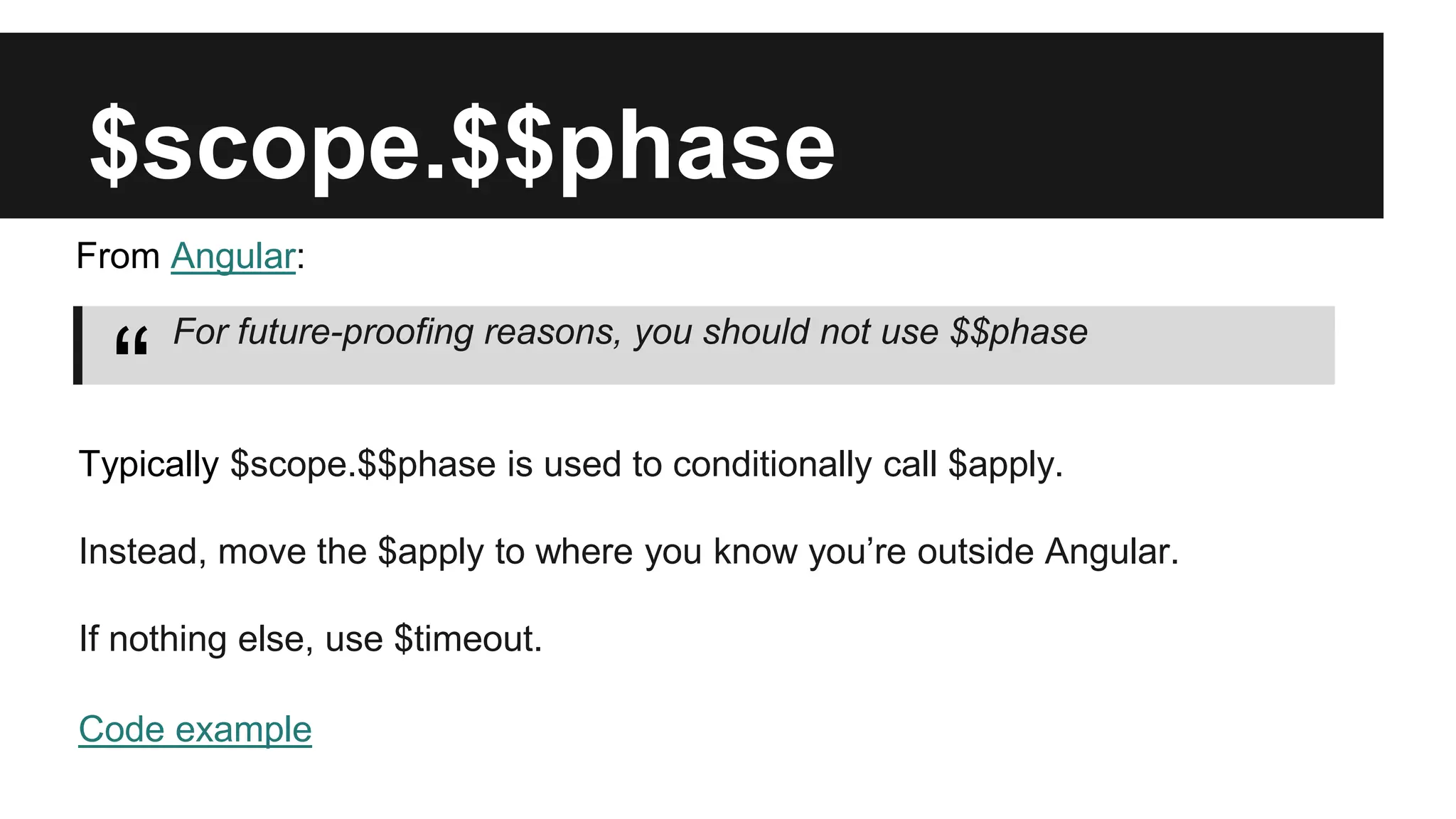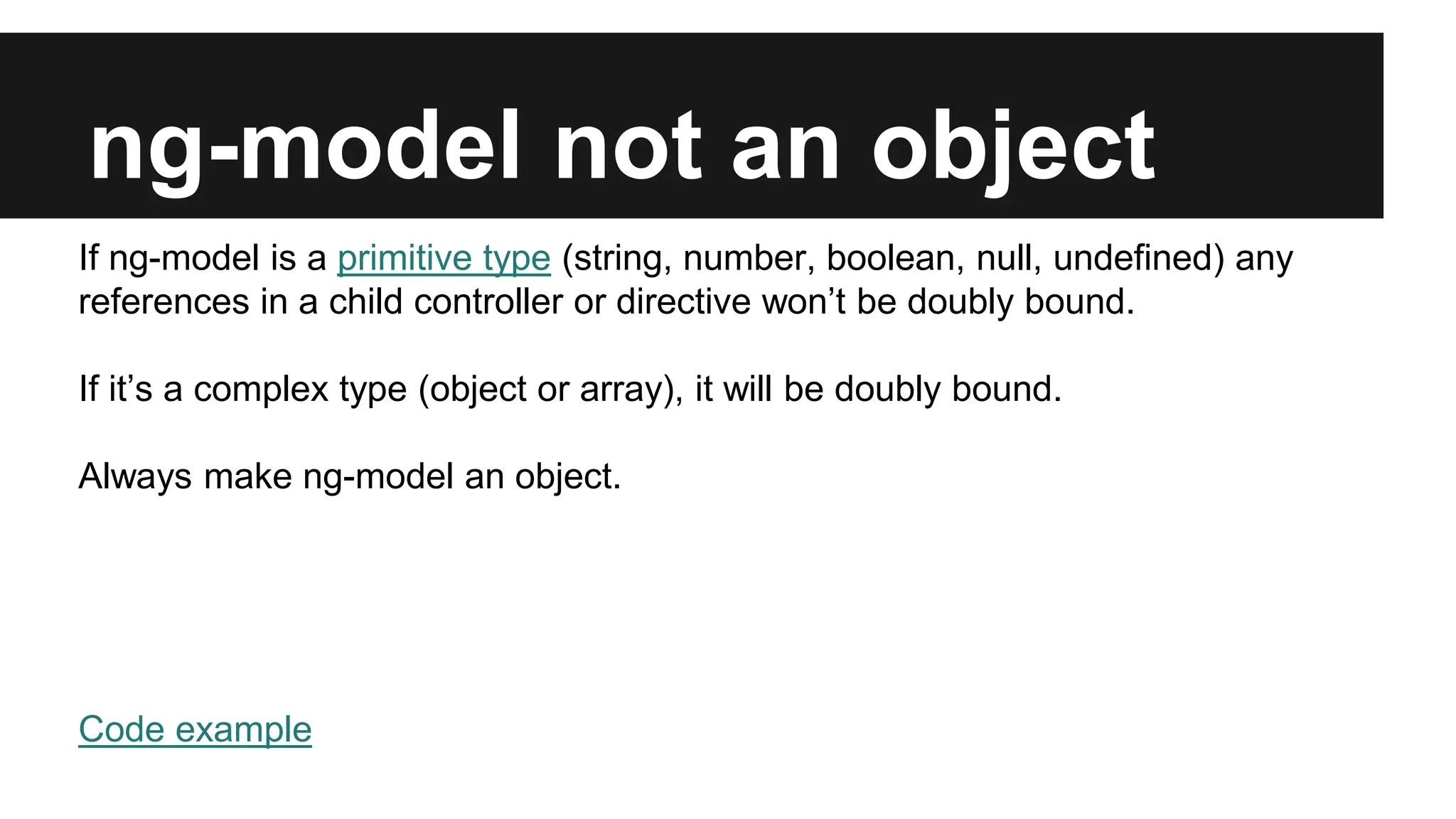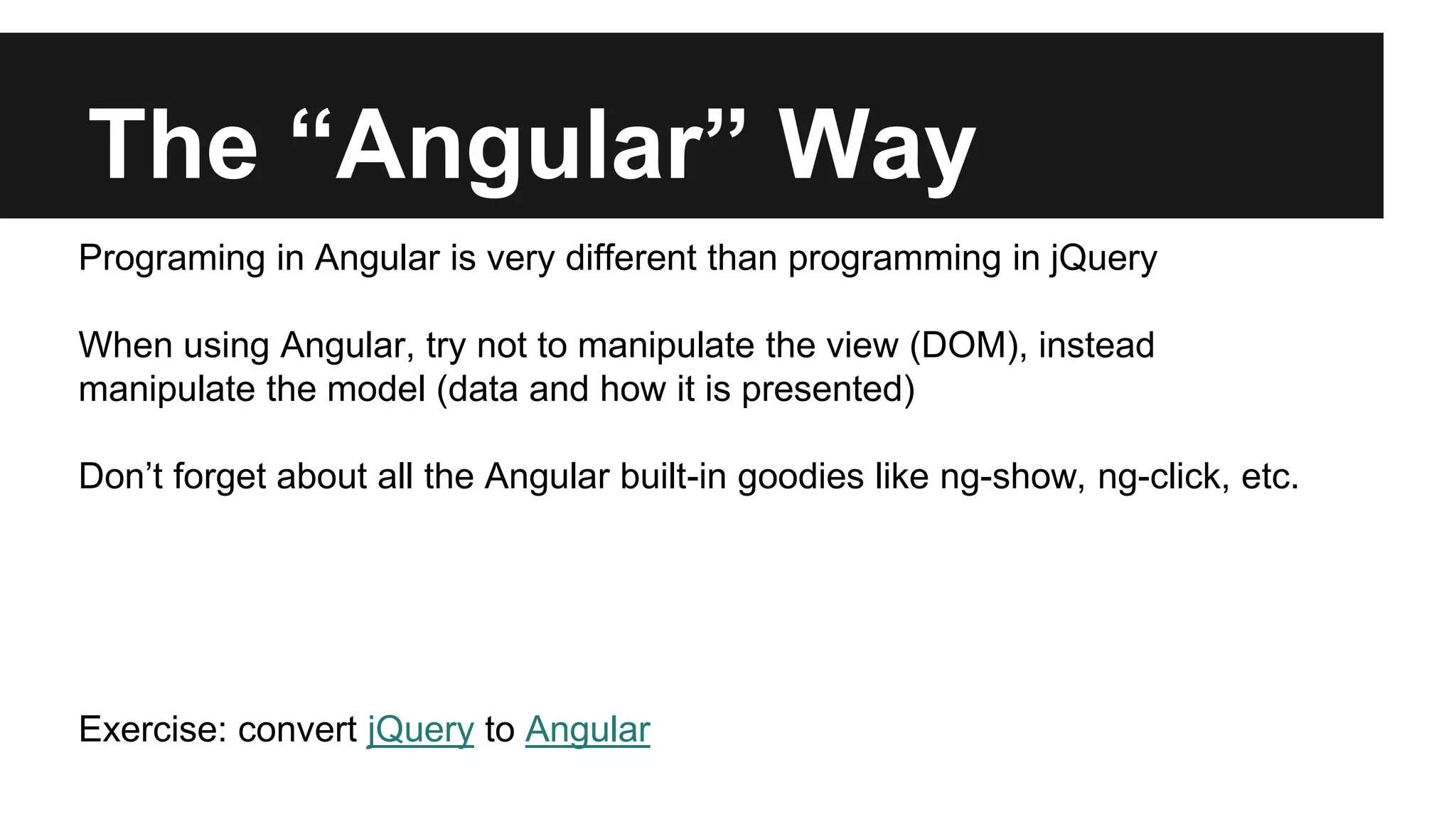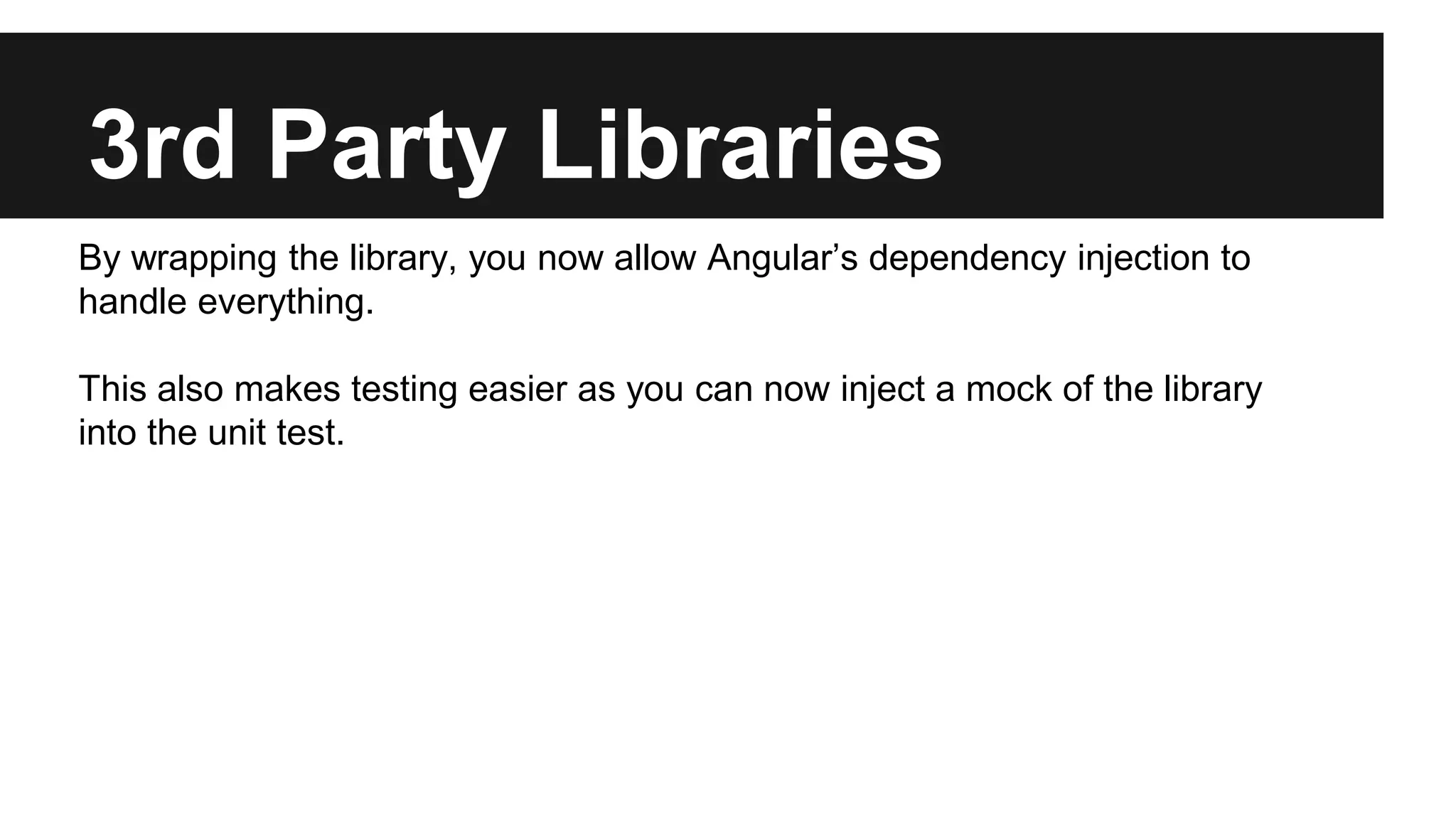Some common AngularJS anti-patterns include: - Using jQuery to manipulate the DOM instead of directives - Checking $scope.$$phase instead of moving $apply calls appropriately - Not making ng-model bindings objects which can break child scopes - Creating bloated controllers that do too much like DOM manipulation instead of focusing on data - Not programming in an "Angular way" by manipulating views instead of models - Failing to encapsulate third party libraries in Angular services
